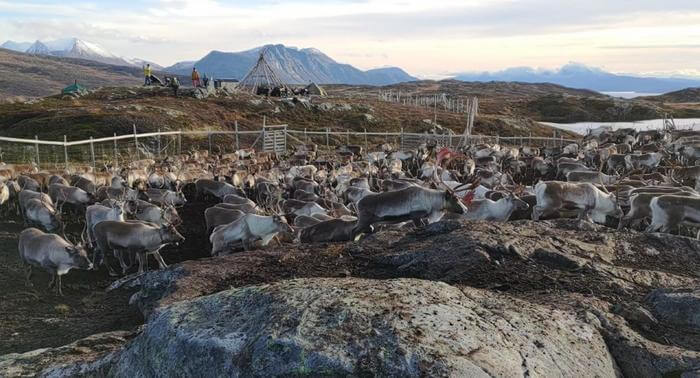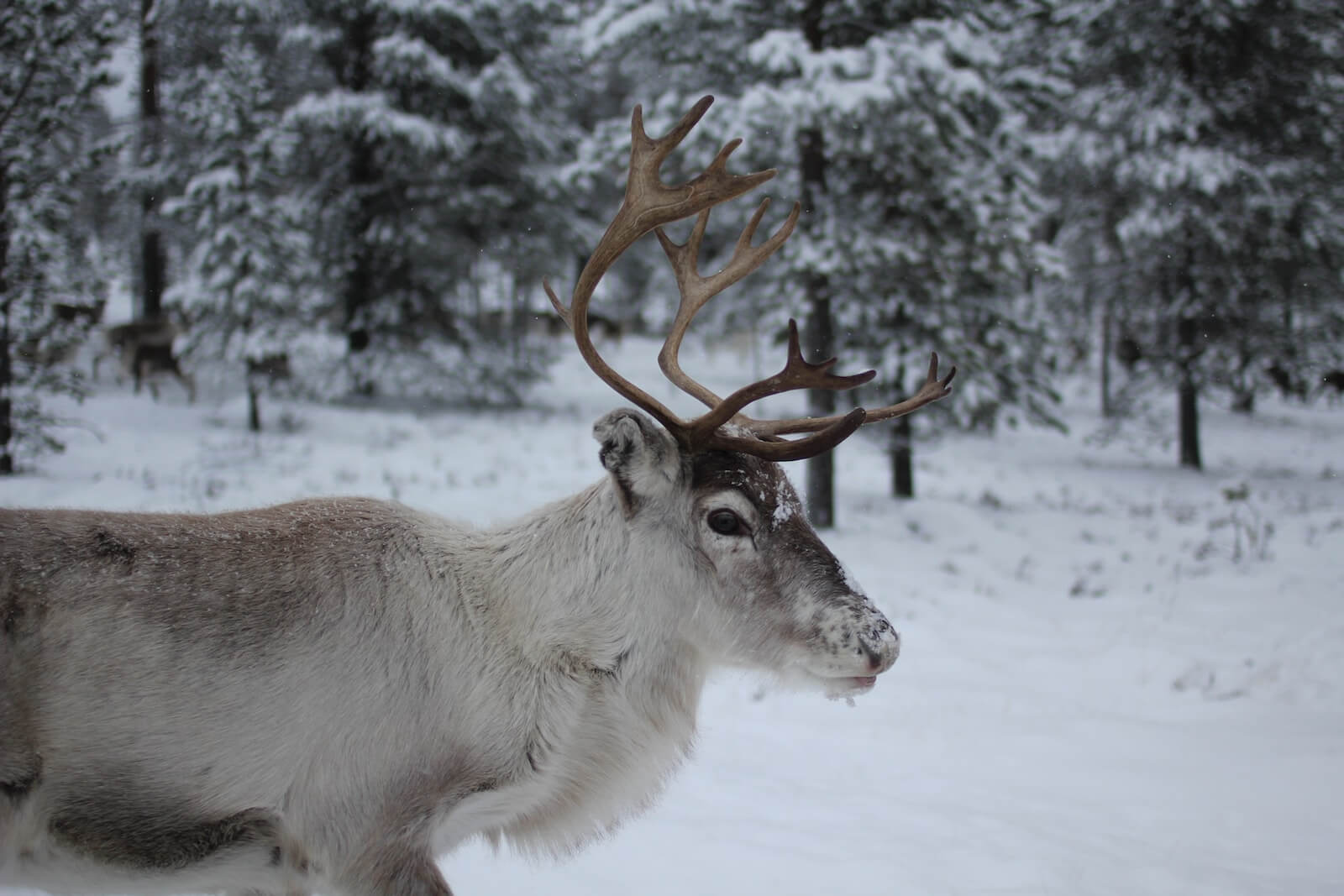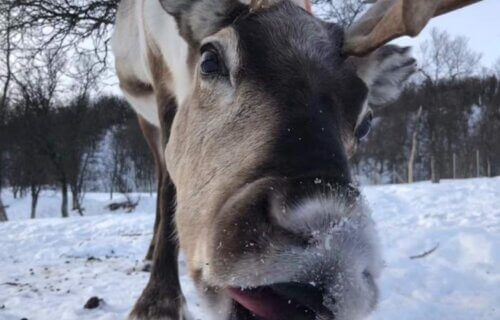ZÜRICH, Switzerland — Dinnertime for reindeer doesn’t end when they go to sleep. A new study finds these symbols of the holiday season actually keep chewing cud even while they sleep.
You may be more familiar with animals such as cows or sheep “chewing the cud,” but a team from the University of Zurich explains that reindeer do it too. The expression basically means all of these animals slowly chew their partly-digested food over and over again before finally swallowing it. Now, it turns out this keeps happening even when reindeer go to bed.
The study demonstrates that the more time Santa’s multitasking sleigh-pullers spend ruminating (chewing the cud), the less time they devote to non-rapid eye movement (non-REM) sleep. Electroencephalogram (EEG) recordings of brain activity show that reindeer’s brainwaves during rumination are similar to those observed during non-REM sleep. Scientists suggest that the brainwave patterns indicate reindeer are more “rested” following extensive cud-chewing while they sleep.
Researchers believe this multitasking behavior may help reindeer acquire sufficient sleep during the summer months, a period characterized by abundant food. This is crucial as reindeer feed almost continuously in preparation for the long, food-scarce Arctic winter.
“The more reindeer ruminate, the less additional non-REM sleep they need,” says first author and neuroscientist Melanie Furrer of the University of Zurich in a media release. “We think it’s very important that they are able to save time and cover their sleep and digestive needs at the same time, especially during the summer months.”
In the Arctic, where light-dark cycles are absent during winter and summer, previous studies have shown that Arctic-dwelling reindeer do not exhibit circadian behavioral rhythms in these seasons. These reindeer tend to be more active during daylight hours in the spring and autumn equinoxes, when light-dark cycles are present. However, until now, it was unclear whether these seasonal variations also affected the quantity and quality of sleep among reindeer.

A research team conducted electroencephalograms (EEGs) on Eurasian tundra reindeer in Tromsø, Norway, during the autumn equinox, summer solstice, and winter solstice. The subjects were all adult female reindeer from a captive herd at UiT The Arctic University of Norway in Tromsø. The experiments took place in indoor stables with controlled lighting, unlimited food, and a constant temperature.
The findings, published in the journal Current Biology, revealed that the reindeer slept approximately the same amount during winter, summer, and autumn, even though their activity levels significantly increased during the summer. This pattern contrasts with other species that adjust their sleep duration in response to environmental changes.
On average, the reindeer engaged in 5.4 hours of non-REM sleep, 0.9 hours of REM sleep, and 2.9 hours of rumination during a typical 24-hour period, regardless of the season.
“The fact that reindeer sleep the same amount during winter and summer implies that they must have other strategies to cope with limited sleep time during the arctic summer,” says Furrer.
The researcher suggests that one potential avenue for rest in reindeer could be through rumination — the process of re-chewing partially digested food, which is crucial for digestion in reindeer and other ruminants. It has been observed in domestic sheep, goats, cattle, and the Lesser mouse-deer that sleep-like brainwaves occur during rumination. However, it was previously unclear whether rumination could offer a restorative function similar to sleep.
The research team discovered that the brainwave patterns of reindeer during rumination, as recorded by EEG, closely resemble those indicative of non-REM sleep. These patterns include increased slow-wave activity and the presence of sleep spindles.

Reindeer exhibit similar behaviors when sleeping and ruminating, typically sitting or standing quietly and showing less reactivity to disturbances, such as a neighboring reindeer sitting down or standing up. The reindeer’s reactions to such disturbances varied depending on their state: they responded 45 percent of the time when awake, but only 25 percent of the time during rumination, and five percent of the time during non-REM sleep.
The researchers further investigated whether rumination could reduce the reindeer’s need for sleep. They deprived the animals of sleep for two hours and then measured their brain waves during sleep before and after this deprivation. Post-sleep deprivation, the reindeer exhibited increased slow-wave activity in their EEG readings, indicating a heightened need for sleep. However, when the reindeer engaged in rumination, this slow-wave activity during subsequent sleep decreased. The more they ruminated, the greater the reduction in slow-wave activity, suggesting that rumination might diminish the biological drive for deeper sleep.
“This suggests that rumination reduces sleep pressure, which could benefit the reindeer because it means they don’t have to compromise on sleep recovery when they spend more time ruminating,” Furrer explains.
The study author notes that this is especially important during the summer because the more reindeer eat, the more time they need to spend ruminating.
“Rumination increases nutrient absorption, so it’s crucial for reindeer to spend enough time ruminating during the summer in order to gain weight in anticipation of winter,” Furrer concludes. “We know sleep need is much higher in young children and babies compared to adults, so it would be interesting to look at sleep in younger reindeer.”
You might also be interested in:
- Chewing your food more can prevent you from becoming overweight
- Does the sound of others chewing infuriate you? Like 1 in 5 adults, you may suffer from misophonia
- Nose for survival: Seals thrive in the Arctic by growing bigger nostrils
South West News Service writer Stephen Beech contributed to this report.

